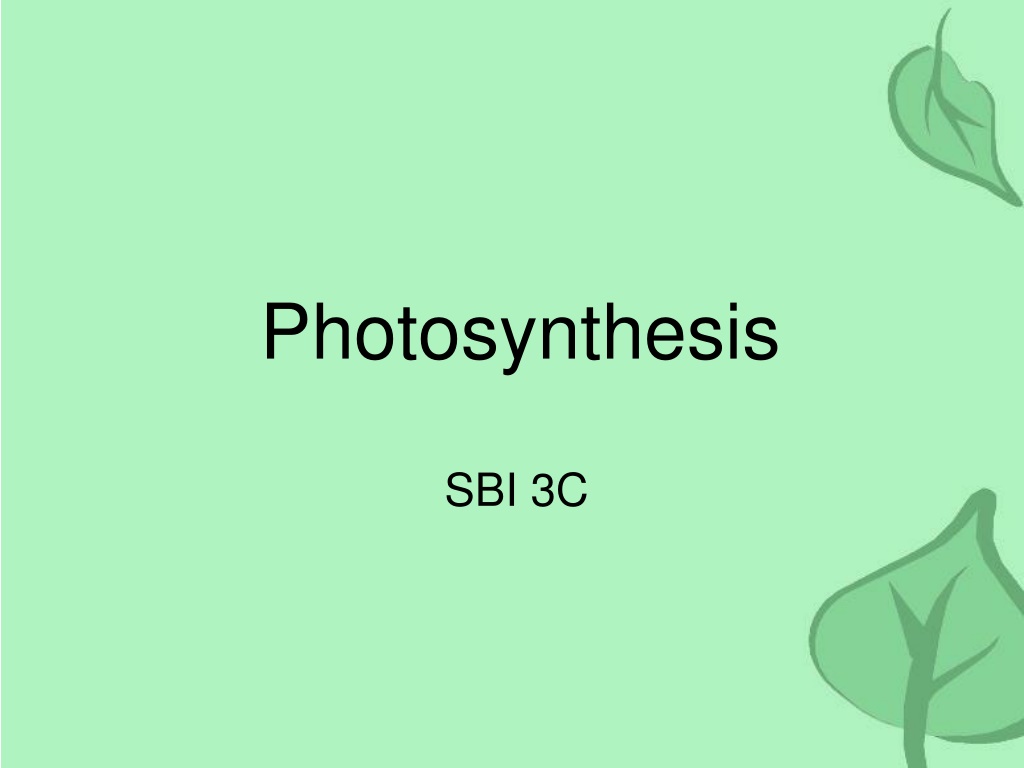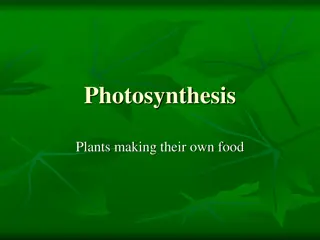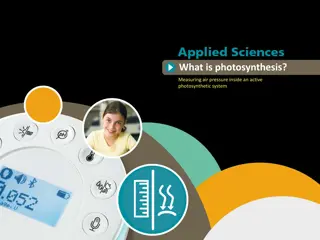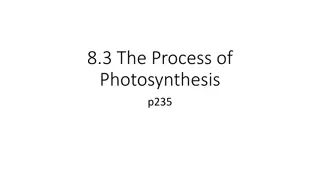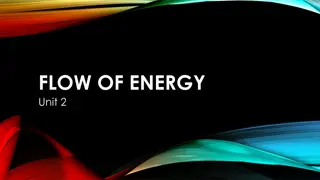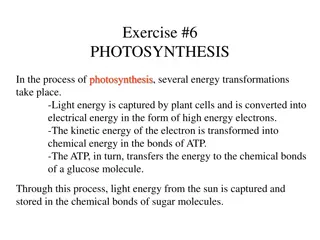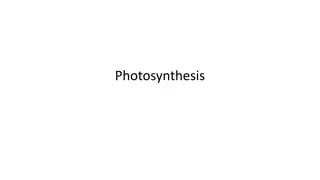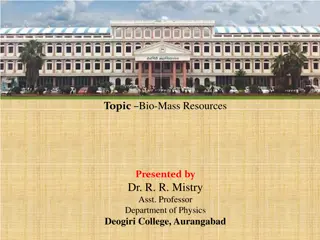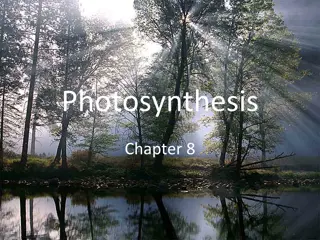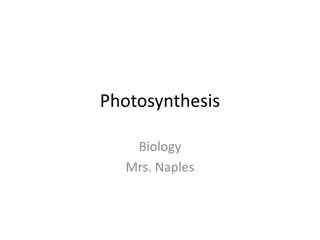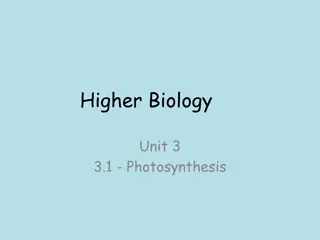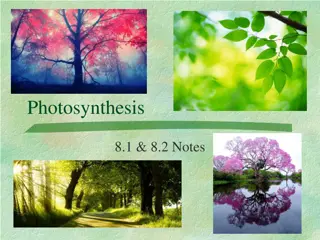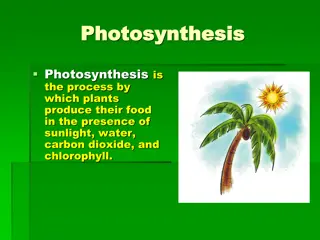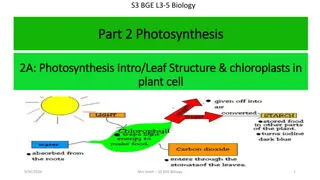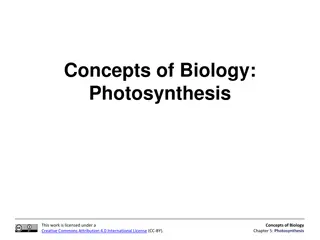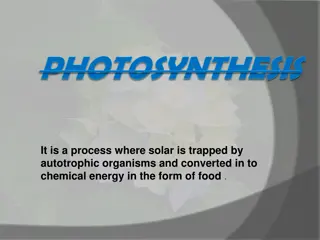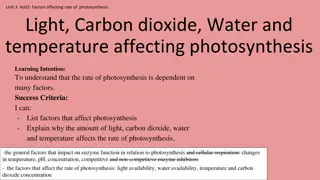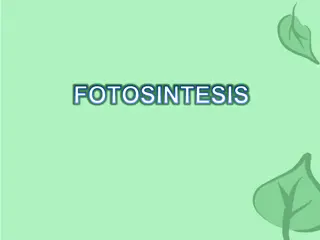Understanding Photosynthesis: The Process of Energy Conversion in Plants
Photosynthesis is a vital process where plants, algae, and cyanobacteria convert light energy from the sun into chemical energy in the form of glucose. This energy conversion involves the absorption of light by chlorophyll molecules in chloroplasts, leading to the generation of ATP and the formation of glucose and oxygen. The process consists of two main stages - the light-dependent reactions, which require sunlight, and the light-independent reactions (Calvin Cycle), which occur both in sunlight and darkness. Overall, photosynthesis plays a crucial role in sustaining life on Earth by providing energy for plants and eventually for animals that consume plants.
Download Presentation

Please find below an Image/Link to download the presentation.
The content on the website is provided AS IS for your information and personal use only. It may not be sold, licensed, or shared on other websites without obtaining consent from the author. Download presentation by click this link. If you encounter any issues during the download, it is possible that the publisher has removed the file from their server.
E N D
Presentation Transcript
Photosynthesis SBI 3C
Overview All energy on earth comes from the sun. We depend on: Plants Algae (underwater plants) Cyanobacteria (photosynthetic bacteria) To provide this energy to us!
Overview Carbon dioxide and water are taken in by plants Plants absorb light energy and convert it to a usable form. ATP Energy is used to fix carbon dioxide into sugar molecules Chemical energy Sugar is converted to starch and stored for use by the plant, and by animals when they eat plants.
Chloroplasts Have TWO membranes A bi-bilayer! The inner membrane is called the thylakoid. The thylakoid is folded and looks like stacks of coins called granum (grana singular). The stroma is the space surrounding the granum Image source: http://www.daviddarling.info/encyclopedia/C/chloroplasts.html
Chloroplasts Chlorophyll molecules are embedded in the thylakoid membrane Act like a light antenna These molecules can absorb sunlight energy. Image from Biology 11: College Preparation. Pg 73. Nelson, Toronto. 2003.
Light (dependent)Reactions Happen ONLY in sunlight Hence they depend on light! 1. Light is absorbed by chlorophyll molecules 2. The energy generates molecules of ATP Image from: Biology 11: College Preparation. Pg 74. Nelson, Toronto. 2003.
Light Independent Reactions (formerly the dark reactions ) Happen in sunlight, and in the dark. Hence independent of light ATP generated by sunlight drives the Calvin Cycle. Monosaccarides (eg. glucose) are manufactured in the cycle. Monosaccarides are used to build polysaccharides (eg. Starch). 1. 2. 3. Image from: Biology 11: College Preparation. Pg 74. Nelson, Toronto. 2003.
Overall Reaction What is the equation for photosynthesis? carbon dioxide + water glucose + oxygen + energy 6CO2 + 6H2O C6H12O6 + 6O2 + energy
Summary Image from: Biology 11: College Preparation. Pg 74. Nelson, Toronto. 2003.
Why do leaves turn brown in the fall? It s all about pigments! Let s go outside and collect some leaves! to be continued =)
This powerpoint was kindly donated to www.worldofteaching.com http://www.worldofteaching.com is home to over a thousand powerpoints submitted by teachers. This is a completely free site and requires no registration. Please visit and I hope it will help in your teaching.
